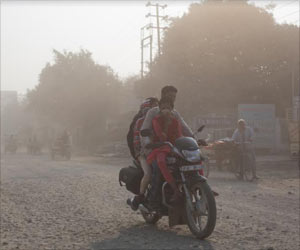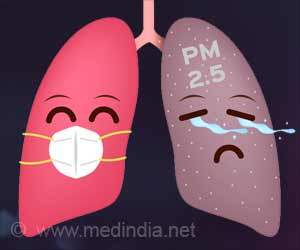
‘Exposure to particulate air pollution is linked to many chronic diseases like heart and respiratory conditions.’
Tweet it Now
Some responsible pollutants include carbon monoxide, nitrogen dioxide, sulfur dioxide, and small particulate matter (less than 10 microns and less than 2.5 microns). Short-term particulate exposure contributed to acute coronary events (heart attack) in patients with underlying coronary artery disease. PM1, PM2.5, and PM10 are risk factors of all-cause, cardiovascular, stroke, respiratory, and COPD mortality. PM1 accounts for the vast majority of short-term PM2.5- and PM10-induced mortality. Smaller size fractions of PM have a more toxic mortality impact.
Speaking about this, Padma Shri Awardee, Dr. KK Aggarwal, President, HCFI, said, “Air pollution is a reality today and has been a subject of much discussion recently. Several studies have demonstrated the association of poor air quality with diseases such as respiratory and heart diseases, making it a major public health problem of concern. Air pollution and specifically fine particulate matter are associated with increased cardiovascular disease mortality. It has emerged as a potentially modifiable risk factor for the development of CVD.
Multiple observational studies have demonstrated an association between fine particulate air pollution (primarily from the use of fossil fuels in automobiles, power plants, and for heating purposes) and cardiovascular and cardiopulmonary mortality as well as an increased risk for the development of the acute coronary syndrome.”
There is increasing evidence for the role of the environment in pathogenesis in many diseases. Children below five years of age and adults older than 50 years are most at risk. A global assessment of the burden of disease from environmental risks by the WHO has shown that 23% of global deaths and 26% of deaths among children under five are due to modifiable environmental factors.
Advertisement
Some tips from HCFI
Advertisement
- Walk or cycle for short-distance commutes or to the neighborhood market. Plan and combine all your errands in one area or close by areas for one trip. Limit driving and make use of carpool.
- Use public transport as much as possible for longer distances. If you have to use your vehicle, keep it well maintained for efficient functioning with regular servicing to reduce harmful exhaust emissions and get pollution check done as required. Follow speed limits. Avoid buying diesel vehicle.
- Avoid burning candles, dhoop or incense sticks at home or workplace.
- Quit smoking.
- Plant more trees. Limit the areas of bare soil by growing grass to reduce the amount of dust. Sprinkle water on exposed soil or construction sites regularly to reduce the generation of dust. Wet mop the floors at home or workplace.
- Choose a place with least pollution levels when there is a choice.
Source-Medindia









